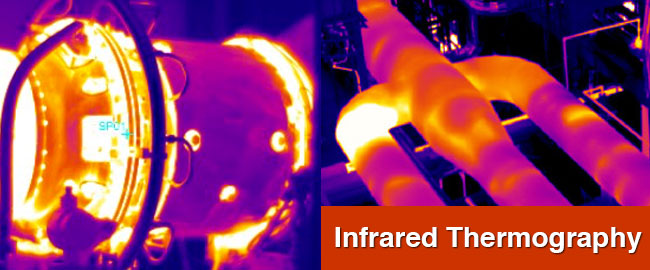Infrared Thermography London
Building Response provide advanced and intuitive thermography capabilities involving interpretation, identification, locating and correlating details within individual infrared images produced during the course of routine maintenance surveys.
While issues like emissivity are minimised by dirty metal surfaces, other issues like reflections, convective losses due to wind and other conditions can lead to erroneous conclusions. Our qualified infrared Thermographers are skilled and knowledgeable regarding the principles of heat transfer, reflectance, emittance and transmission, and the images we produces are extremely useful for accurate and timely PdM.
Infrared thermography can be an effective PdM tool for several important power plant components and systems, including:
Power Distribution Survey London
Consistent, reliable electricity delivery is one of a power generator’s highest priorities and infrared thermography is a viable method of regularly monitoring power distribution equipment.
Switchyards Inspection & Reporting
At many power plants, switchyard inspections are performed during periods of maximum load, even though weather conditions at that time of day can mask serious problems. Switchyard inspections are therefore normally carried out before dawn to avoid solar reflections and wind effects. The load is often lighter but other significant variables can be better accounted for, so any observable problems are more likely to be detected.
Boilers, pipes, traps and valves
While efficient electricity delivery is essential, efficient production is equally important. In a thermal power plant, when steam valves leak or fail, high energy content steam or water blows through to the condenser; money is thus wasted. Our thermal imaging services can be used by plant maintenance staff to regularly scan pipes, valves and traps to identify problems early on and thus control costs.
Motors
A vast majority of infrared analysis is qualitative and comparative; that is, similar pieces of equipment are examined and compared. In advanced PdM systems, various system components/ equipment may have their own monitoring program. One example is pulverizer motor inspection; consider a power plant that has 27, 400- 500 horsepower motors driving pulverisers that feed the boilers.
The plant has a motor casing monitoring program and regularly examines the case temperature for each motor. The National Electrical Manufacturers Association temperature ratings are posted on the motors’ nameplates, indicating baseline operating temperatures. The normal temperature is approximately 48 – 50 degrees Celsius, depending on ambient conditions.
A 4 degree temperature rise usually indicates the need to clean the filters. When the rise exceeds 4 degrees, it indicates that the motor needs to be cleaned and reconditioned. Assuming the motors are all about the same size and operate under similar loads, it’s a fairly simple matter for our Building Response Thermal Imaging specialists to identify “hot” motors and address the situation.
Because energy losses are not limited to steam lines, infrared thermography can also be used for boiler inspection to identify areas of insulation breakdown. Hot areas on boiler walls indicate areas of worn insulation and energy losses. Infrared thermography helps identify these areas so they can be addressed.

